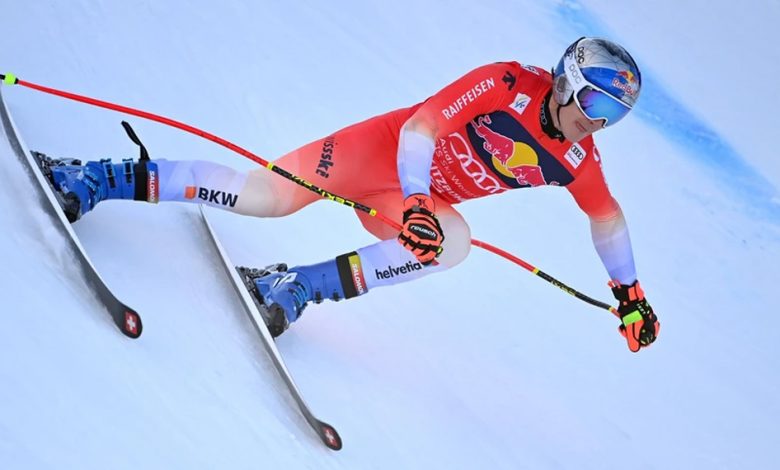Abfahrt Kitzbühel Biography

Abfahrt Kitzbühel, also known as the Hahnenkamm downhill race, is one of the most prestigious and challenging events in the world of alpine skiing. Held annually in Kitzbühel, Austria, this thrilling competition has become a hallmark of excellence and excitement for both athletes and fans. This biography delves into the history, significance, and key aspects of this iconic race.
History and Origins
The Hahnenkamm race was first held in 1931, making it one of the oldest alpine skiing events in the world. The downhill race, or “Abfahrt,” quickly gained international recognition for its difficulty and the skill required to conquer the demanding Streif course. Over the decades, it has become a centerpiece of the FIS Alpine Ski World Cup, attracting top skiers from around the globe.
The Streif Course
The Streif is renowned as one of the most dangerous and technically demanding downhill courses. Spanning approximately 3.3 kilometers, the course features steep slopes, sharp turns, and high-speed sections that test the limits of even the most experienced skiers. Key sections of the course, such as the “Mausefalle” (Mousetrap) and “Steilhang” (Steep Slope), have become legendary for their difficulty and excitement.
Significance in the Skiing World
Winning the Abfahrt Kitzbühel is considered a crowning achievement in the career of any alpine skier. The race is not just about skill and speed; it also demands immense courage and mental strength. Many skiing legends, including Franz Klammer, Didier Cuche, and Aksel Lund Svindal, have etched their names into history with victories on the Streif.
Spectacle and Tradition
The Hahnenkamm race week is a major event in Kitzbühel, drawing tens of thousands of spectators and creating a festive atmosphere. Beyond the downhill race, the event also includes slalom and super-G races, making it a comprehensive celebration of alpine skiing. The picturesque town of Kitzbühel provides the perfect backdrop, blending tradition and modernity.
Challenges and Safety
The Abfahrt Kitzbühel is not without its risks. Due to the extreme nature of the course, safety measures have evolved significantly over the years, including improved protective gear and advanced course preparation techniques. Despite these efforts, the race remains a formidable challenge that pushes athletes to their limits.
Business and Economic Impact
Beyond its reputation as a premier sporting event, the Hahnenkamm race contributes significantly to the local economy of Kitzbühel. The influx of tourists, media, and sponsorship deals during race week provides a major boost to hotels, restaurants, and businesses in the region. The event’s global television coverage also enhances Kitzbühel’s status as a top skiing destination.
Awards and Recognition
The Hahnenkamm race has received numerous accolades over the years, solidifying its place as a cornerstone of alpine skiing. Skiers who triumph at the Abfahrt Kitzbühel often gain worldwide acclaim, and the event itself has been lauded for its organization and enduring legacy.
Ethnicity and Community
While the race does not directly involve a specific ethnicity, it reflects the rich cultural heritage of Tyrol, the region in which Kitzbühel is located. The Tyrolean community takes immense pride in hosting this event, showcasing their traditions and hospitality to a global audience.
Conclusion
Abfahrt Kitzbühel is more than just a ski race; it is a symbol of excellence, tradition, and the relentless pursuit of greatness. As skiers hurtle down the Streif at breathtaking speeds, they embody the spirit of the sport and the enduring legacy of this iconic event. For fans and athletes alike, the Hahnenkamm downhill race is a spectacle that continues to captivate and inspire.
See More – Sachin Tendulkar Daughter Boyfriend Biography
FAQs About Abfahrt Kitzbühel
Q: What is Abfahrt Kitzbühel?
A: Abfahrt Kitzbühel, also known as the Hahnenkamm downhill race, is a prestigious alpine skiing event held annually in Kitzbühel, Austria.
Q: When was the first Hahnenkamm race held?
A: The first Hahnenkamm race was held in 1931.
Q: What is the Streif course?
A: The Streif is the downhill course used for the Abfahrt Kitzbühel, known for its steep slopes, sharp turns, and high speeds, making it one of the most challenging courses in alpine skiing.
Q: Why is the Abfahrt Kitzbühel significant?
A: Winning the race is considered a major achievement in alpine skiing due to the difficulty of the course and the prestige associated with the event.
Q: What are some famous sections of the Streif course?
A: Famous sections include the “Mausefalle” (Mousetrap) and “Steilhang” (Steep Slope), both known for their technical difficulty.
Q: Is the race dangerous?
A: The Abfahrt Kitzbühel is one of the most demanding and risky races in alpine skiing. While safety measures have improved, it remains a challenge for even the most skilled athletes.
Q: How does the race benefit the local economy?
A: The event attracts thousands of tourists and generates significant revenue for Kitzbühel’s hospitality and business sectors, boosting the local economy.
Q: Are there other races during the Hahnenkamm week?
A: Yes, the event also features slalom and super-G races, making it a comprehensive celebration of alpine skiing.



